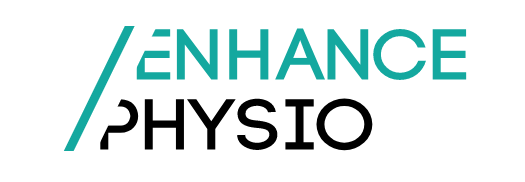Enhance Physio Offers Comprehensive Migraine Management Program in Wodonga
Enhance Physio Wodonga is excited to announce its latest initiative aimed at supporting individuals suffering from migraines in Wodonga and surrounding suburbs. With a focus on holistic management, the clinic employs physiotherapy techniques that target common migraine triggers, enhance posture, and alleviate tension. By integrating tailored exercises and lifestyle advice, Enhance Physio aims to empower patients to take control of their migraine symptoms. This innovative approach not only seeks to reduce the frequency and intensity of migraines but also promotes overall well-being. Residents of Wodonga can now access these valuable resources, enhancing their quality of life through effective physiotherapy.
Enhance Physio Offers Effective Physiotherapy Strategies for Migraine Management in Wodonga
Do debilitating migraines leave you feeling trapped in darkness, unable to enjoy life? You’re not alone—millions suffer from this painful condition, often seeking relief through medications that may come with unwanted side effects.
Migraine sufferers frequently juggle various treatment options, from over-the-counter pain relievers to prescribed medications, yet many are still left searching for a lasting solution. As the prevalence of migraines increases, so does the interest in alternative approaches to management, particularly within the realm of physiotherapy. This evidence-based practice is gaining traction as an effective method for alleviating migraine symptoms and improving quality of life, yet it remains underutilized.
If you’re ready to break free from the cycle of pain and begin managing your migraines more effectively, physiotherapy might be the answer you’ve been searching for. By addressing migraine triggers and working to improve posture, flexibility, stress management, sleep, and neck impairments physiotherapy offers a holistic approach to treatment.
What is a migraine?
A migraine is a severe headache that can cause throbbing pain, often on one side of the head. It’s often accompanied by nausea, vomiting, and extreme sensitivity to light and sound.
Migraines can last for hours to days, and the pain can be so intense that it interferes with daily activities. Some people may experience visual changes or other symptoms before the headache begins.
Key characteristics of a migraine headache include:
-
- Moderate to severe, throbbing pain: Often on one side of the head, but can also be on both sides.
-
- Nausea and vomiting: These are common symptoms during a migraine attack.
-
- Sensitivity to light and sound: Loud noises and bright lights can worsen migraine pain.
-
- Worse with routine activity: Routine physical activity such as cooking, cleaning, brisk walking, and gym can trigger migraines.
-
- Aura: Some people experience visual disturbances or other symptoms before the headache starts.
Migraines can be triggered by several factors, including:
-
- Stress
- Hormonal changes
- Specific foods
- Environmental influences
- Skipping meals
- Low blood sugar
- Alcohol
- Lack of sleep
Migraine treatment and management require a personalized approach since these triggers are unique to each individual.
Understanding the link between migraines and physiotherapy
1. Muscle tension and posture: Muscle tension, often due to poor posture or stress, can trigger or exacerbate migraines. Physiotherapists can identify and address these underlying issues.
2. Jaw joint dysfunction (TMJ): Misalignment of the jaw joint can contribute to migraines. Physiotherapy techniques can help improve jaw function and reduce pain.
3. Stress management: Physiotherapy often incorporates relaxation techniques like deep breathing and progressive muscle relaxation, which can effectively manage stress and prevent migraine attacks.
Physiotherapy techniques for migraine management
1. Manual therapy
-
- Soft tissue mobilization: This involves applying gentle pressure to release muscle tension and improve blood flow.
-
- Joint mobilization: This technique addresses joint stiffness and misalignment, which can contribute to migraines.
2. Exercise therapy
-
- Stretching: Regular stretching helps improve flexibility and reduce muscle tension.
-
- Strengthening exercises: Strengthening the neck, shoulders, and back muscles can provide better support and reduce strain.
-
- Postural correction: Physiotherapists can teach proper posture to alleviate stress on the head and neck.
3. Modalities
-
- Heat therapy: Applying heat can help relax muscles and reduce pain.
-
- Cold therapy: Ice can help reduce inflammation and numb pain.
-
- TENS (Transcutaneous Electrical Nerve Stimulation): This technique uses electrical currents to block pain signals.
-
- Dry needling: This approach has shown potential in relieving migraine-related pain and inducing calm.
4. Education and lifestyle advice
-
- Ergonomics: Physiotherapists can provide guidance on creating a more ergonomic workspace to reduce strain on the body.
-
- Stress management techniques: Learning relaxation techniques like meditation or yoga can help prevent migraine triggers.
-
- Sleep hygiene: Improving sleep quality can contribute to overall health and reduce migraine frequency.
When to consider physiotherapy for migraines
- If you experience frequent or severe migraines.
- If medications alone are not providing adequate relief.
- If you have accompanying symptoms like neck pain, jaw pain, or muscle tension.
- If you want to explore non-pharmacological approaches to migraine management.
Benefits of physiotherapy for migraines
1. Pain reduction: Physiotherapy techniques can help alleviate pain associated with migraines.
2. Improved mobility: Addressing underlying musculoskeletal issues can improve mobility and reduce tension, potentially triggering fewer migraines.
3. Reduced frequency and intensity: Regular physiotherapy sessions may help decrease the frequency and severity of migraine attacks.
4. Enhanced posture: Correcting poor posture can alleviate strain on the neck and shoulders, which can contribute to migraines.
5. Stress management: Physiotherapy often incorporates relaxation techniques and stress management strategies to help reduce migraine triggers.
6. Vestibular therapy: For those with vestibular migraines, physiotherapy can help address balance issues and reduce dizziness.
Final thoughts
Managing migraines doesn’t have to be a battle fought alone. With the right physiotherapy Wodonga techniques, you can transform your pain into progress and regain control over your life.
By harnessing the power of movement, posture, and targeted treatments, you’re not just managing migraines, you’re embarking on a journey towards a brighter, headache-free future.
So why wait? Take the first step today and say goodbye to migraines—your best days are waiting just around the corner!
Book an appointment with one of our highly qualified physiotherapist Wodonga at Enhance Physio before starting a rehabilitation program. We can advise you on the best course of action for your condition.
Contact Enhance Physio Today for Your Path to Better Migraine Management
 Wodonga is a vibrant regional city located in northeastern Victoria, Australia, known for its rich history and scenic landscapes along the Murray River. It offers a blend of urban amenities and natural beauty, making it an attractive place for families and professionals alike. Enhance Physio proudly provides migraine management with physiotherapy services within Wodonga and its surrounding suburbs, ensuring that local residents have access to effective strategies for managing their migraine symptoms.
Wodonga is a vibrant regional city located in northeastern Victoria, Australia, known for its rich history and scenic landscapes along the Murray River. It offers a blend of urban amenities and natural beauty, making it an attractive place for families and professionals alike. Enhance Physio proudly provides migraine management with physiotherapy services within Wodonga and its surrounding suburbs, ensuring that local residents have access to effective strategies for managing their migraine symptoms.For those seeking relief from migraines, Enhance Physio invites you to explore our comprehensive physiotherapy services tailored specifically for migraine management. Our dedicated team is here to provide guidance and support as you embark on your journey towards improved health and comfort. Contact Enhance Physio today for a consultation and discover how we can assist you in managing your migraine symptoms effectively.





